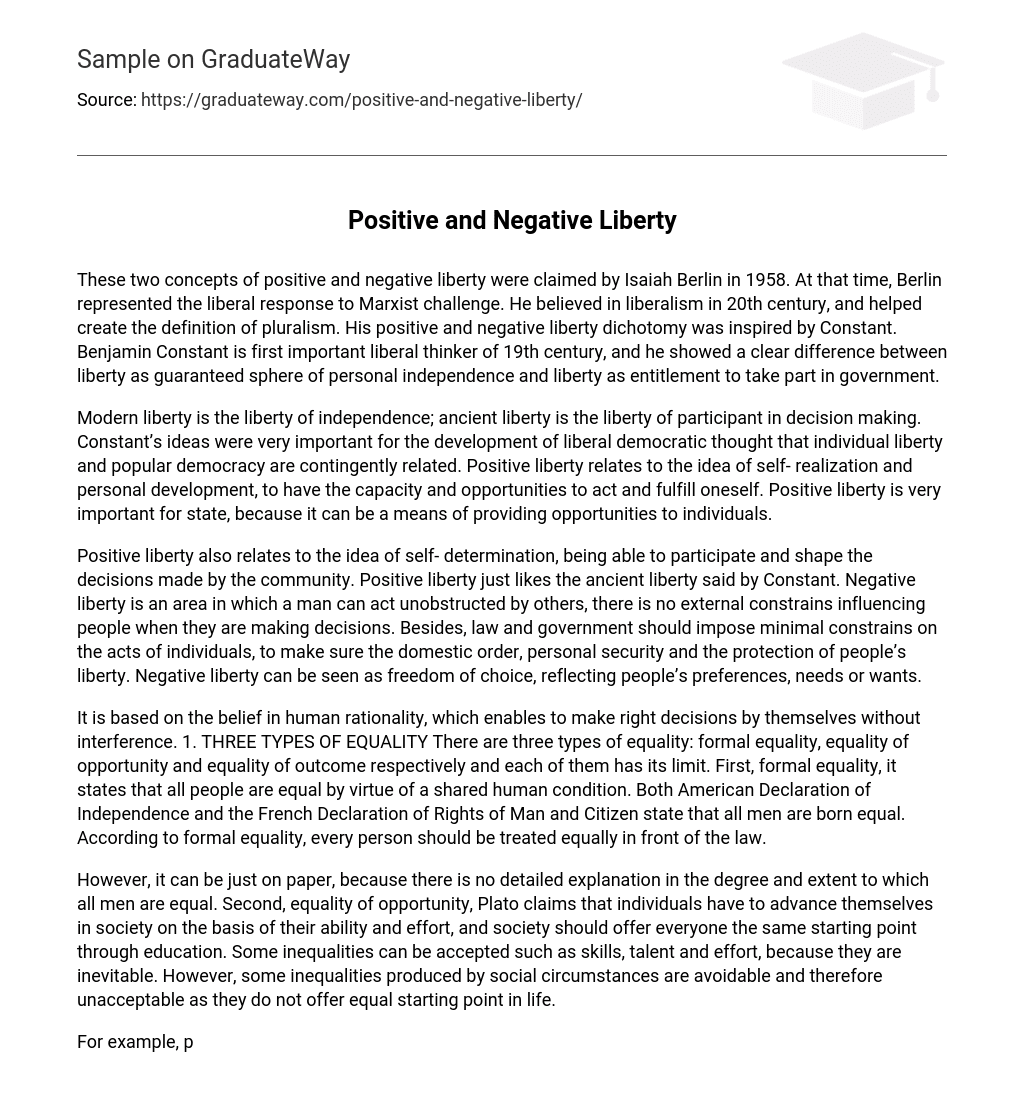These two concepts of positive and negative liberty were claimed by Isaiah Berlin in 1958. At that time, Berlin represented the liberal response to Marxist challenge. He believed in liberalism in 20th century, and helped create the definition of pluralism. His positive and negative liberty dichotomy was inspired by Constant. Benjamin Constant is first important liberal thinker of 19th century, and he showed a clear difference between liberty as guaranteed sphere of personal independence and liberty as entitlement to take part in government.
Modern liberty is the liberty of independence; ancient liberty is the liberty of participant in decision making. Constant’s ideas were very important for the development of liberal democratic thought that individual liberty and popular democracy are contingently related. Positive liberty relates to the idea of self- realization and personal development, to have the capacity and opportunities to act and fulfill oneself. Positive liberty is very important for state, because it can be a means of providing opportunities to individuals.
Positive liberty also relates to the idea of self- determination, being able to participate and shape the decisions made by the community. Positive liberty just likes the ancient liberty said by Constant. Negative liberty is an area in which a man can act unobstructed by others, there is no external constrains influencing people when they are making decisions. Besides, law and government should impose minimal constrains on the acts of individuals, to make sure the domestic order, personal security and the protection of people’s liberty. Negative liberty can be seen as freedom of choice, reflecting people’s preferences, needs or wants.
It is based on the belief in human rationality, which enables to make right decisions by themselves without interference. 1. THREE TYPES OF EQUALITY There are three types of equality: formal equality, equality of opportunity and equality of outcome respectively and each of them has its limit. First, formal equality, it states that all people are equal by virtue of a shared human condition. Both American Declaration of Independence and the French Declaration of Rights of Man and Citizen state that all men are born equal. According to formal equality, every person should be treated equally in front of the law.
However, it can be just on paper, because there is no detailed explanation in the degree and extent to which all men are equal. Second, equality of opportunity, Plato claims that individuals have to advance themselves in society on the basis of their ability and effort, and society should offer everyone the same starting point through education. Some inequalities can be accepted such as skills, talent and effort, because they are inevitable. However, some inequalities produced by social circumstances are avoidable and therefore unacceptable as they do not offer equal starting point in life.
For example, poverty, rich and poor people do not have a same starting point Third, equality of outcome is a controversial and radical point of view. It trend to shifts the emphasis from the starting point in life to its end results. Most commonly associated with material equality, equality of social circumstances, living conditions and even wages. However, it difficult to achieve, for example, people who from wealthy and well-connected families would have advantages, they are easy to get a good outcome, but poor people can not do that as easy as rich people, because they do not have a good economic base.





